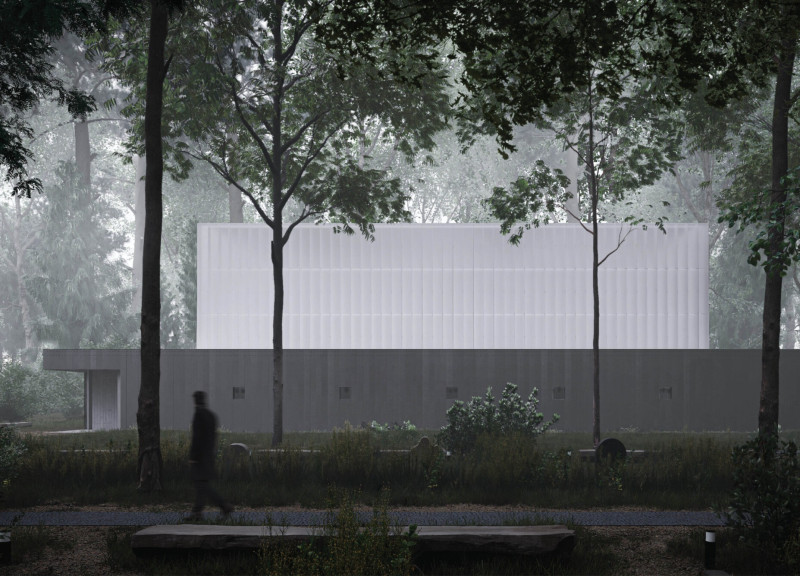5 key facts about this project
"Curtain of Reunion" is a design located in The Great Cemetery of Riga, focusing on the theme of remembrance and the connection between the living and the deceased. The structure aims to provide a calm environment where visitors can reflect on their memories of lost loved ones. The central idea revolves around a soft, weightless curtain, which symbolically separates yet connects these two realms, using light and shadow to create a space for comfort and contemplation.
Spatial Organization
The columbarium is structured around a central black box, which offers a quiet area for memory. Surrounding this box are four translucent white curtains that form a bright, open space at the center. This arrangement takes inspiration from traditional basilica designs, merging elements of sacred spaces with contemporary architecture. Guests enter from the northwest side, moving into a softly lit area filled with a glowing wall made of curved tubes that contain the urns. This design emphasizes both distance and closeness with those who have passed.
Light and Experience
As visitors move through the building, they discover private seating areas separated by walls. This arrangement creates small, intimate spaces for pause and reflection. The curved shapes encourage a gentle flow of movement, enhancing the journey through the experience. Above, narrow gaps in the walls allow natural light to spill in, providing a comforting atmosphere while connecting the interior with the tranquil landscape outside.
Materiality and Symbolism
Material choices reinforce the themes of the design. Charred square logs symbolize the physical body, while concrete walls embody the enduring spirit. The translucent fiberglass panels used for the urn wall represent the soul's ascension. These different materials create a varied texture that adds depth to the space. Together, they foster a thoughtful environment that supports engagement with memories and the nuanced relationship between life and death.
Light filters through the translucent surfaces, creating connections between the contents within and the peaceful views outside, inviting visitors to experience moments of remembrance that resonate deeply and linger long after they leave the space.






















































